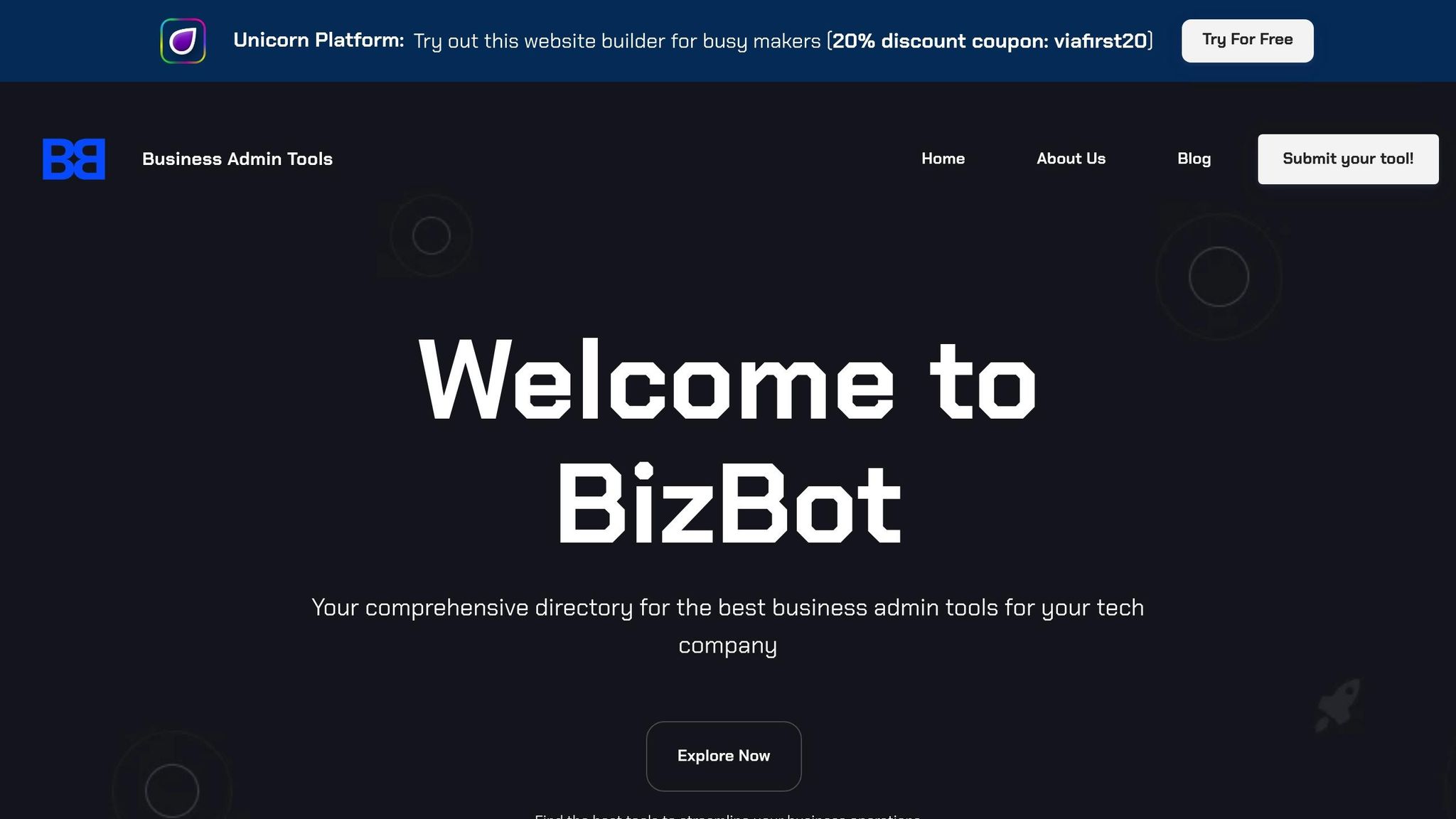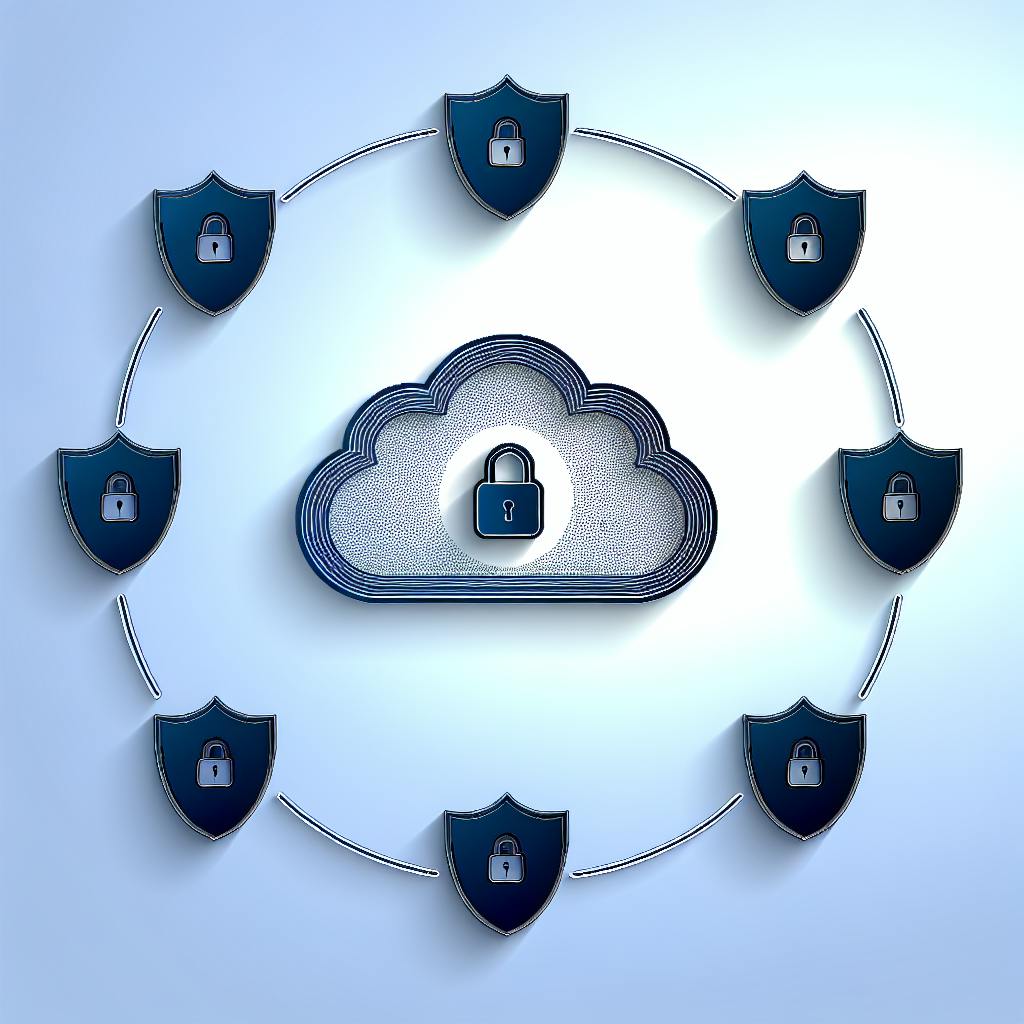Real-time supply chain visibility software has become indispensable in 2025, helping businesses track goods, mitigate risks, and improve efficiency. These tools integrate technologies like IoT, GPS, and AI to offer real-time tracking, predictive analytics, and multi-tier supplier insights. They address challenges like global disruptions, compliance demands, and consumer expectations for transparency.
Key benefits include better inventory management, reduced risks, compliance support, and cost savings. Modern platforms now feature AI-driven forecasting, blockchain for traceability, and mobile-first designs. Top providers such as project44, FourKites, and SAP IBP cater to diverse needs, offering cloud-based solutions and integration with ERP systems.
When selecting software, prioritize features like real-time tracking, predictive analytics, and ease of integration. Consider your business size, industry-specific needs, and geographic reach. Tools like BizBot simplify comparisons, helping you find the right fit while managing costs effectively.
Benefits and Features of Supply Chain Visibility Software
Main Benefits
Improved transparency ensures complete oversight of operations, covering everything from sourcing raw materials to delivering the final product. This clarity eliminates guesswork, reducing costly errors and enabling managers to base decisions on accurate, real-time data instead of assumptions.
Enhanced operational efficiency helps businesses identify and resolve bottlenecks before they become larger issues. By addressing potential problems early, companies can minimize downtime, cut waste, and make better use of their resources across the supply chain.
Risk reduction comes from early alerts about potential disruptions. These notifications allow businesses to activate contingency plans, ensuring operations continue smoothly even when faced with unexpected challenges.
Regulatory compliance is simplified with automated tracking and reporting tools. The software keeps detailed records of supply chain activities, making it easier to prove adherence to safety standards, industry regulations, and environmental guidelines during audits or inspections.
Increased customer satisfaction stems from accurate delivery estimates and real-time order tracking. Customers appreciate knowing exactly when their orders will arrive, which builds trust and loyalty. This level of transparency also reduces customer service inquiries about order statuses.
Cost savings are achieved through better inventory management, reduced reliance on expedited shipping, and fewer penalties for non-compliance.
These benefits are made possible through a combination of powerful, integrated features.
Important Features to Consider
To unlock these advantages, supply chain visibility software includes several essential features:
Real-time shipment tracking is at the core of visibility software. Using GPS, RFID, and IoT sensors, it monitors the location and condition of goods during transit. The system tracks factors like temperature, humidity, and other environmental conditions that could impact product quality.
Predictive analytics capabilities enable businesses to anticipate challenges and seize opportunities. By analyzing historical data, current trends, and external factors, these tools forecast demand, flag potential supply chain disruptions, and suggest optimal inventory levels. Machine learning algorithms refine these predictions over time as more data becomes available.
ERP and TMS integration ensures seamless connectivity between different business systems. Linking visibility software with enterprise resource planning (ERP) and transportation management systems (TMS) eliminates data silos, reduces manual input errors, and provides a unified view of operations.
Multi-tier supplier visibility goes beyond monitoring direct suppliers, extending to sub-suppliers and their networks. This broader perspective helps identify risks hidden in deeper layers of the supply chain and supports ethical sourcing by tracing products back to their origins.
User-friendly dashboards present complex data through clear visuals like charts, graphs, and color-coded alerts. These dashboards highlight key performance indicators and flag urgent issues. Customizable views allow team members to focus on metrics relevant to their specific roles.
Alert and notification systems send immediate warnings when thresholds are crossed or unexpected events occur. These automated alerts ensure critical issues are addressed quickly, even if team members aren’t actively monitoring the system.
Reporting and analytics tools provide insights into supply chain performance. These tools help track trends, measure key metrics, and generate reports for stakeholders. Advanced analytics can uncover patterns that would otherwise go unnoticed.
New Trends in 2025
Emerging trends are shaping the future of supply chain visibility software in 2025, building on its existing capabilities:
AI-driven predictive modeling has reached new levels of sophistication. By processing vast amounts of data from sources like weather patterns, economic indicators, and even social media, these systems offer more accurate forecasts and improved risk management. They continually learn from past events to refine their predictions.
Blockchain technology for traceability is becoming increasingly popular as companies aim to verify the authenticity and origins of their products. Blockchain creates an unchangeable record of every transaction and movement within the supply chain, making it nearly impossible to falsify product history.
Advanced IoT integrations now include a wider range of sensors and monitoring devices. Smart containers can track not just location and temperature but also shock, vibration, light exposure, and air quality. This detailed data helps maintain product quality and identify handling issues.
Sustainability tracking features are now standard in many platforms. Businesses can monitor carbon emissions, energy use, and waste production across their supply chains. This information helps organizations meet environmental goals and appeal to eco-conscious consumers.
Mobile-first design ensures managers can access critical information anytime, anywhere. Modern platforms prioritize mobile functionality, allowing users to receive alerts, approve decisions, and oversee operations on the go.
Cloud-based deployment has become the go-to choice for most companies. Cloud solutions offer scalability, reduced infrastructure needs, and quicker implementation compared to on-premise systems. They also provide automatic updates and enhanced security, making them a practical option for businesses of all sizes.
How to Choose Supply Chain Visibility Software
Evaluating Your Business Needs
Start by identifying what your business truly needs. The size of your company plays a big role here. Smaller businesses might only need basic tracking and reporting tools, while mid-sized companies often require advanced integration options. For large enterprises with complex, multi-layered supply chains, you'll want a platform capable of handling high transaction volumes and intricate workflows.
Industry-specific needs also matter. For example, manufacturers may require detailed tools for production tracking and quality control, while retailers often focus on inventory management and demand forecasting. If you're in a regulated industry, make sure the software supports compliance and safety requirements.
Think about your current challenges and use them to prioritize features. Struggling with late deliveries? Look for real-time tracking and predictive analytics. Facing inventory issues? Automated reordering and demand forecasting will be key. And if compliance is a headache, you'll need robust documentation and audit trail features.
Geography is another factor. Local businesses might do fine with simpler tools, but if you're managing international supply chains, you'll need software that supports multiple currencies, languages, and regulatory requirements. Also, consider whether your logistics involve just one mode of transport or multiple ones like road, rail, air, and sea.
Lastly, assess your existing technology setup. If you're already using cloud-based systems, integration will likely be smoother compared to older, on-premise solutions. Take stock of your current software - like TMS, WMS, ERP, CRM, and accounting tools - to ensure compatibility with the new platform.
Software Evaluation Criteria
When evaluating software, start with its ability to integrate with your existing systems. The last thing you want is data silos or the hassle of manual data entry. Look for platforms with pre-built integrations or APIs that allow custom connections.
Scalability is another must-have, especially if your business is growing. Cloud-based platforms tend to be more flexible, making it easier to add users, handle more transactions, or expand into new markets without a major overhaul. Check if the software can adapt to new product lines, suppliers, and shipment volumes.
Security is non-negotiable. The platform should use strong encryption and comply with relevant regulations. Dig into the vendor’s backup procedures, disaster recovery plans, and access controls to ensure your data stays safe.
User experience is critical for adoption. A clean, intuitive interface with clear dashboards and real-time visualizations can make a huge difference in productivity. Request demo accounts so your team can test the platform’s ease of use.
Real-time tracking is the backbone of supply chain visibility. Make sure the software supports the transportation modes you rely on - whether it’s road, rail, air, or sea - and covers all your geographic needs, including international shipments.
Advanced features like predictive analytics and AI can help you move from reactive to proactive management. Tools for demand forecasting, route optimization, automated exception handling, and risk mitigation are particularly useful, especially if they leverage machine learning to improve over time.
Reporting and analytics tools are essential for making informed decisions. The software should provide customizable insights tailored to different roles - executives may need high-level KPIs, while operations teams might require detailed performance metrics.
Lastly, don’t overlook customer support. Check the available support channels, response times, and training resources to ensure help is readily available when needed.
Once you’ve assessed the technical aspects, think about how the software fits into your financial plans and long-term strategy.
Making Your Final Decision
After addressing technical and user needs, it’s time to weigh financial and strategic factors.
Look beyond the initial licensing fee to calculate the total cost of ownership. Include expenses like implementation, employee training, system upgrades, and ongoing support. Many platforms use subscription-based pricing tied to the number of users or transaction volumes, which can offer flexibility as your needs evolve.
Tiered pricing models let you pick features that match your budget and requirements. While one-time licensing fees might seem appealing, they often lack flexibility for growth and may not include updates or support.
Estimate your return on investment by considering improvements in order accuracy, inventory costs, fill rates, and lead times. Ask vendors for case studies and performance metrics to set realistic expectations.
A pilot test can help reduce risks. Choose a specific segment of your supply chain - like a particular product line or region - and set clear objectives. Gather feedback from stakeholders and measure success during this trial phase.
Creating a comparison framework can also help. Use a scoring system to evaluate factors like feature completeness, ease of use, integration capabilities, vendor reliability, and total cost.
Don’t forget to check references. Contact companies of similar size and industry to learn about their experiences with the platform, including any challenges during implementation and the quality of customer support.
Finally, consider the vendor’s stability and future plans. Choose a partner with solid financial backing, ongoing product development, and a clear vision for growth. Review the contract terms carefully - pay attention to data ownership, termination conditions, and migration support. Negotiate service level agreements that align with your operational needs.
Top Supply Chain Visibility Software Providers in 2025
Leading Market Providers
The supply chain visibility market is packed with standout providers, each offering solutions designed to meet the specific needs of businesses across various industries.
- project44: Known for its real-time tracking capabilities, project44 covers road, rail, ocean, and air freight. Its API-first design ensures seamless integration with existing technology systems.
- FourKites: This platform leverages predictive analytics and machine learning to help businesses stay ahead of potential delays. It focuses on ground transportation and provides tools for managing exceptions proactively.
- Oracle Supply Chain Management Cloud: Part of a larger enterprise suite, Oracle's solution integrates visibility with advanced planning tools, making it ideal for companies seeking deep system integration.
- SAP Integrated Business Planning (IBP): Built for organizations using SAP ERP systems, this platform connects operational data with planning and forecasting, embedding visibility into core business processes.
- Blue Yonder: Formerly JDA Software, Blue Yonder uses artificial intelligence to integrate visibility with planning and execution, catering to retailers and manufacturers aiming for supply chain optimization.
- Manhattan Associates: This provider focuses on visibility within its extensive supply chain execution suite, particularly emphasizing warehouse and distribution operations for businesses with intricate fulfillment needs.
- Kinaxis RapidResponse: Combining supply chain planning with real-time visibility, Kinaxis allows users to simulate scenarios, enabling strategic decisions and risk management.
Each of these platforms brings unique strengths to the table, offering a range of deployment options and pricing models to suit different business requirements.
Feature and Pricing Comparison
These platforms set industry standards by offering flexible pricing and deployment options. While some adopt transaction-based or subscription pricing, others use licensing models tailored to larger enterprises. Deployment choices range from cloud-based solutions for faster implementation to on-premise or hybrid models for businesses with specific needs.
When evaluating these solutions, consider the following key factors:
- Pricing Alignment: Does the pricing structure match your organization's size and operational complexity?
- Deployment Speed: Cloud-based solutions typically roll out faster than systems requiring extensive integration.
- Integration and Support: Look for strong support, training options, and compatibility with ERP, WMS, or TMS systems.
- Geographic Reach: Assess the provider's coverage and carrier network strength, especially if you operate in multiple regions.
Each provider offers a distinct approach to supply chain visibility, so finding the right fit depends on aligning their features with your business goals.
sbb-itb-d1a6c90
Business Tools Directory and Resources
How BizBot Helps with Software Selection

Choosing the right supply chain visibility software can feel overwhelming, especially with so many options out there. BizBot makes this process easier by offering a centralized directory of business administration tools. Categorized for convenience, BizBot allows you to compare software options side by side, saving you time and effort.
Designed with freelancers, small businesses, and growing companies in mind, BizBot focuses on providing tools that are both effective and easy to use. Instead of hopping from one vendor's website to another, you can explore BizBot's curated listings to quickly pinpoint solutions that align with your specific needs.
One standout feature of BizBot is its subscription management tool, which helps you keep track of costs across various software subscriptions. This is especially handy when managing supply chain visibility software, as it ensures you stay on top of different pricing tiers and avoid unnecessary expenses. By streamlining subscription management, BizBot helps maintain smooth supply chain operations.
Additionally, the platform lets you evaluate supply chain visibility software alongside other essential tools like accounting programs, HR systems, and legal services. This integrated view ensures that the software you choose works seamlessly with your current tech setup, reducing the risk of operational inefficiencies. Plus, it highlights complementary tools that can drive overall business growth.
Additional Business Growth Resources
BizBot isn’t just about supply chain visibility - it’s a comprehensive resource for broader business operations. Its directory includes tools aimed at improving various aspects of your business. For instance, BizBot offers solutions for board management and shareholder register maintenance, which become increasingly important as your governance needs grow.
The platform also features digital CFO services, providing financial insights to help you make informed decisions during your software selection process. These insights can be invaluable when weighing the financial impact of your supply chain choices.
For businesses planning to expand, BizBot’s ownership management tools are another valuable resource. These tools are especially useful if you're exploring partnerships or equity arrangements with suppliers or logistics providers. And because BizBot emphasizes scalable solutions, you can start with basic supply chain tools and gradually enhance your capabilities as your business grows.
How To Choose The Right Supply Chain Visibility Software? | LogiNext
Conclusion
In today’s intricate global marketplace, supply chain visibility software isn’t just a nice-to-have - it’s a must-have. The ability to monitor products, predict potential disruptions, and make informed decisions can set thriving businesses apart from those struggling to keep up.
When choosing the right software for your business, it’s important to prioritize your specific operational needs, how well the software integrates with your existing systems, and whether it can scale as your business grows. Remember, the most expensive option isn’t always the best fit, especially for small to medium-sized businesses that need practical and easy-to-use tools.
If you’re looking for help navigating your options, BizBot provides a centralized directory of business tools, complete with a subscription management feature to help you keep technology costs in check as your business expands.
FAQs
How does AI-powered predictive modeling improve supply chain visibility and risk management in 2025?
AI-driven predictive modeling transforms how businesses approach supply chain visibility and risk management. With tools that enable real-time data analysis, proactive risk identification, and automated decision-making, companies can stay ahead of potential challenges like supplier delays or geopolitical disruptions, responding swiftly and efficiently.
Using predictive analytics, businesses gain the ability to forecast risks, fine-tune inventory levels, and cut operational expenses. This technology boosts flexibility and streamlines operations, helping organizations navigate the complexities of today's global supply chains with greater resilience.
What should businesses keep in mind when integrating supply chain visibility software with their ERP and TMS systems?
When connecting supply chain visibility software with ERP and TMS systems, compatibility should be at the top of your checklist. Make sure the software supports open APIs to allow seamless data sharing across platforms. This ensures smoother communication and reduces the risk of bottlenecks.
Another key aspect is addressing data security - protecting sensitive information is non-negotiable. At the same time, enabling real-time synchronization is crucial to avoid delays and make quicker, more informed decisions.
For the integration to truly work, the software should fit into your existing workflows without causing disruptions. Training a dedicated team to oversee the process can also make a huge difference, helping streamline the transition. When done right, this integration can keep your operations running smoothly and unlock the full potential of your supply chain tools.
How does blockchain enhance traceability and verify authenticity in supply chains?
Blockchain technology improves supply chain traceability by offering a secure, transparent, and tamper-resistant record of transactions. Every step in the supply chain is recorded as a block, creating a digital ledger that ensures data remains accurate and easy to track.
It also plays a key role in verifying product authenticity. By enabling real-time tracking and offering proof of origin, blockchain allows companies to confirm whether goods adhere to ethical sourcing or quality standards. This added layer of transparency helps build customer trust in the products they buy.


